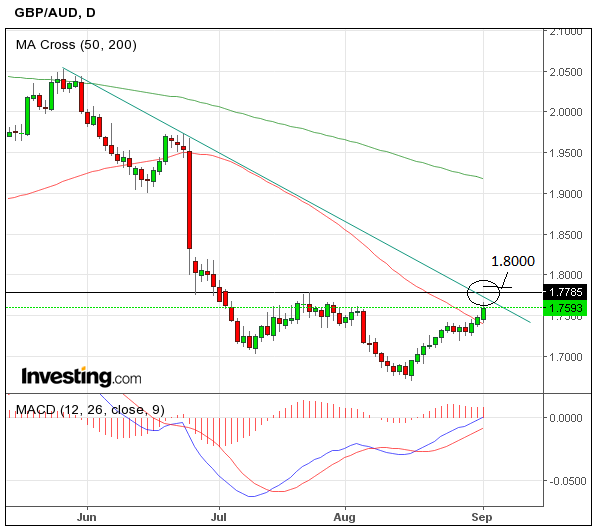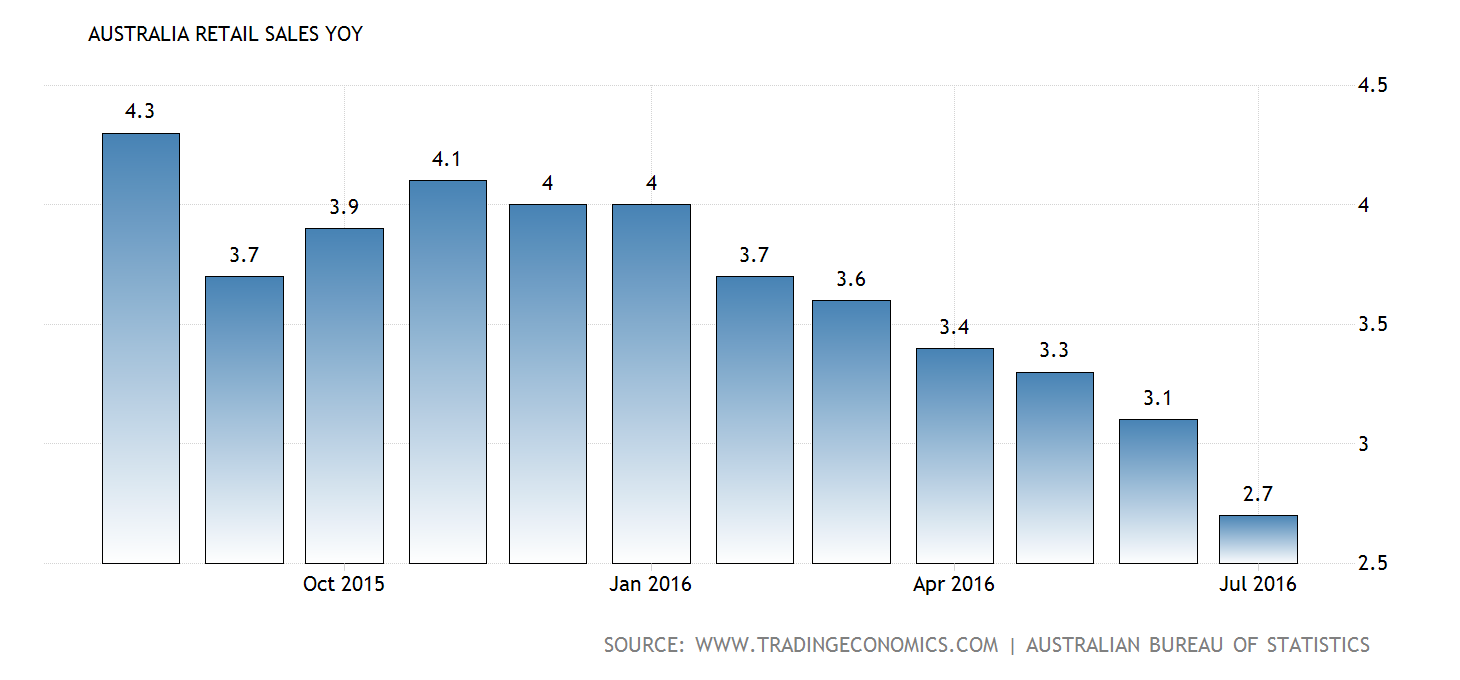More Advances for GBP/AUD Rate Forecast

Recent Australian economic data suggests slowing activity which could allow the Pound to hit our next forecast target on the GBP/AUD charts.
Mid-August has proven to be somewhat of a water-shed moment for the GBP/AUD exchange rate as since this point the pair has risen in 13 of the 15 daily trading sessions.
This is a solid performance that leads us to believe that the exchange rate has put in a temporary post-Brexit vote bottom.
With regards to the outlook, further gains are being communicated by our studies of the pair's charts.
What really stands out is the nexus of lines comprised of the trend-line and a historical resistance line not far above the current trading level:
If the exchange rate reaches these lines at the 1.7785 level they will probably retreat due to the combination of resistance exerted simultaneously by both.
We would be looking for a clear break above 1.7850 for confirmation of a clearance, and extension up to 1.8000.
Fundamentals Suggest Aus Dollar to Come off the Boil
The Australian dollar lost ground on Thursday after data came out showing that Australian shoppers restrained their spending in July, with year-on-year sales slowing to 2.7% from 3.1% previously.
Month on month sales flat lined when markets had expected a 0.3% rise and ANZ’s own forecasts had stood at 0.2%.
A fall in Retail Sales in the states of Victoria and NSW was one of the main reasons for the overall slowdown.
“Importantly, both NSW and Victoria recorded a decline in retail sales for the second consecutive month, a disappointing result given that broader economic activity in both states remains robust. Sales fell by 0.2% m/m in NSW and 0.6% m/m in Victoria in July,” say ANZ bank in their assessment of the data.
The main area which saw loses was Department Store Sales, which saw a hefty decline of 6.2% in July.
Australian Capital Investment was also hit after falling -5.4% qoq, in Q2, which was the same as Q1.
The actual result fell in between market expectations for a -4.0% fall and ANZ’s more dire forecast a fall of -6.4%.
They showed investment in mining continuing to fall due to price pressures on commodities, whilst investment in the non-mining sector flat-lined.
The Aussie data contrasted with that from the UK which showed Manufacturing PMI bouncing back surprisingly well in September and led to an immediate rally in Sterling.






